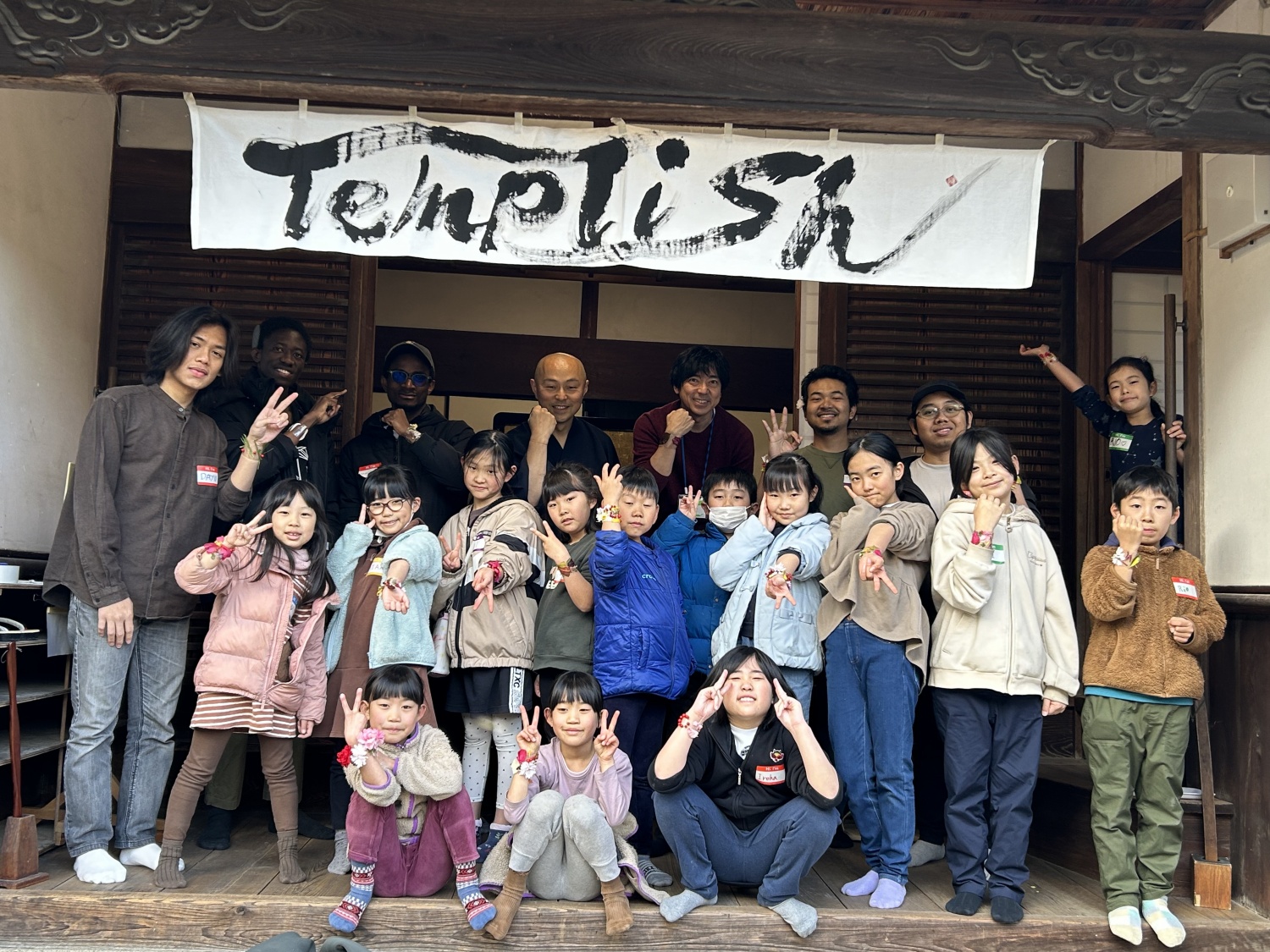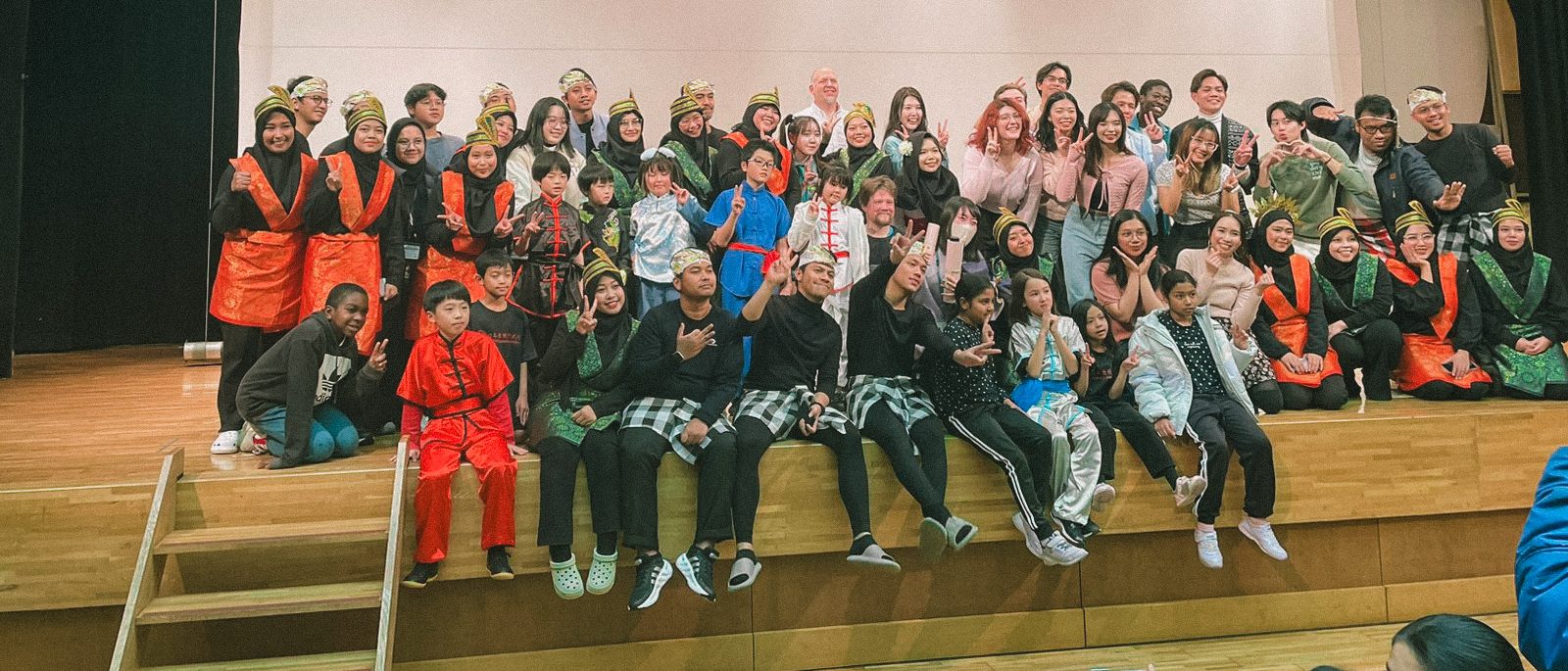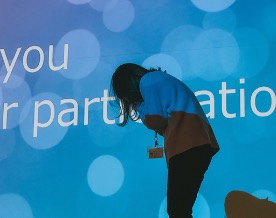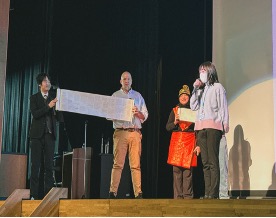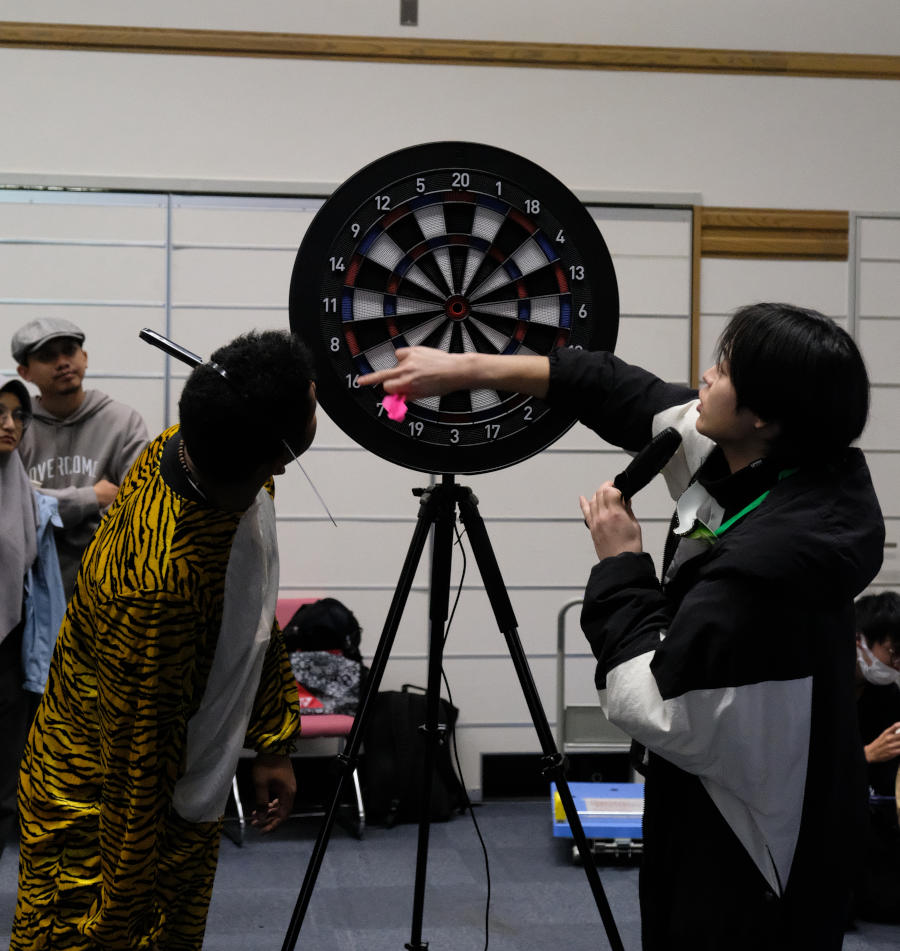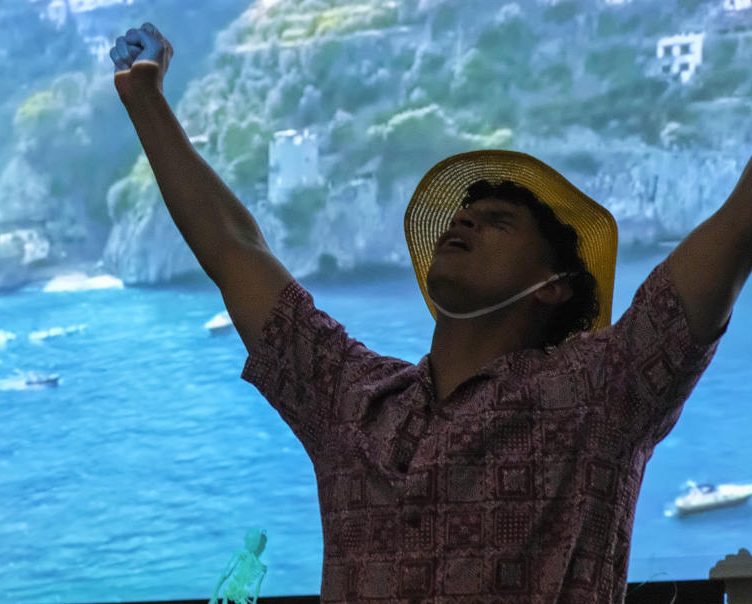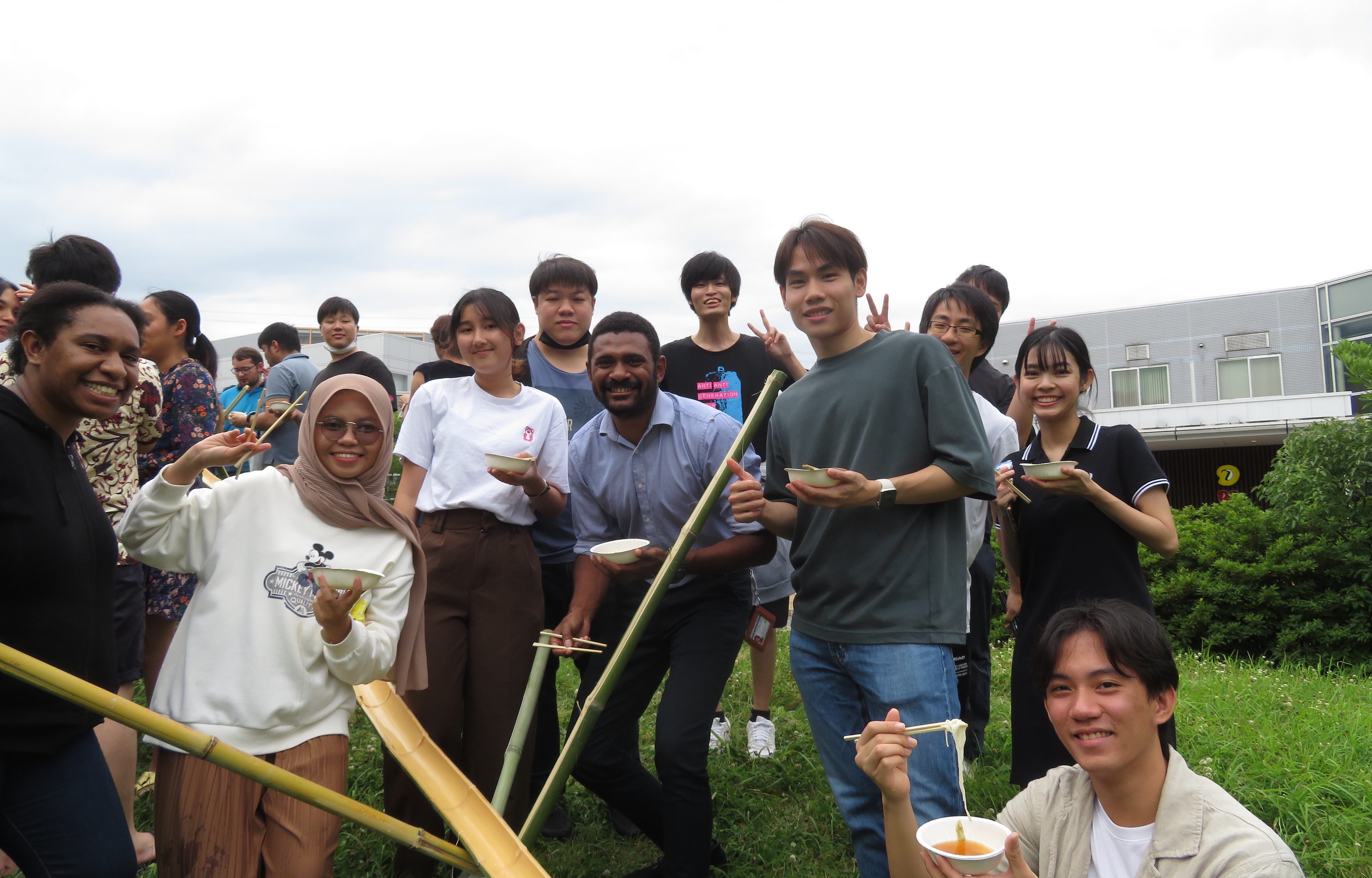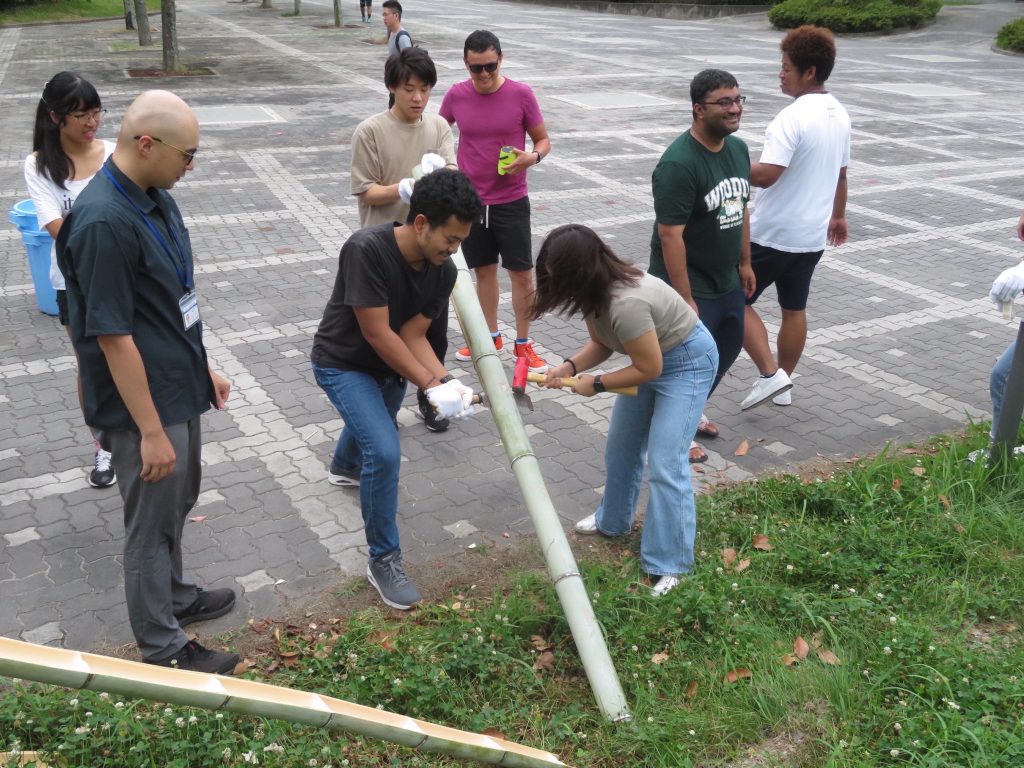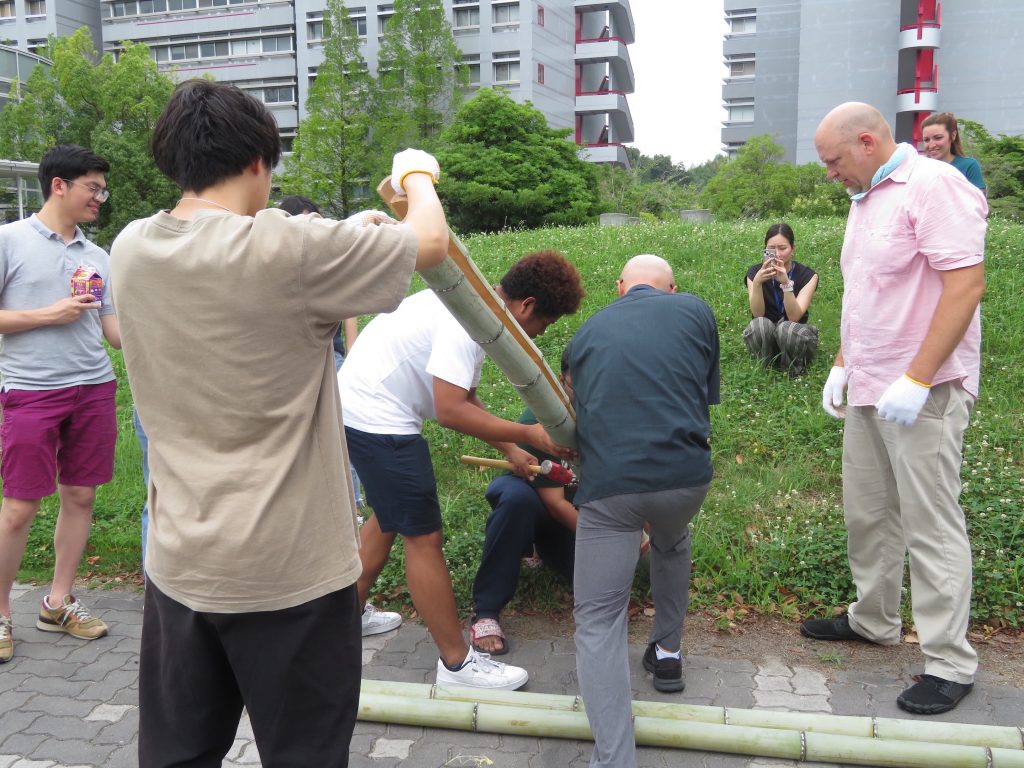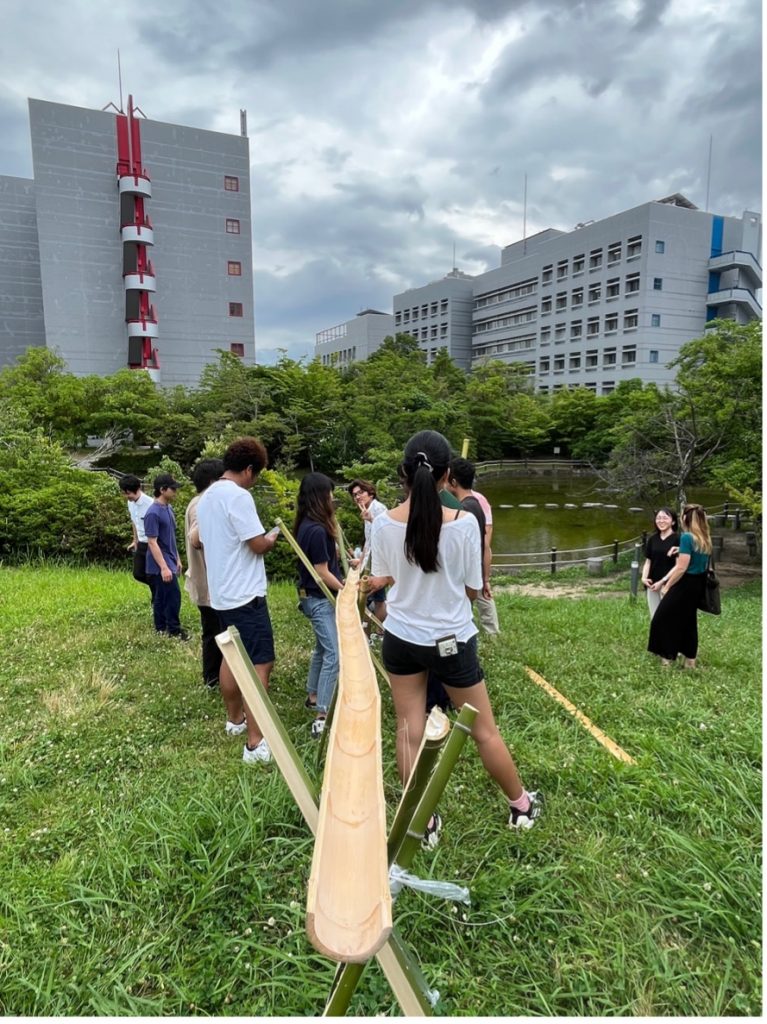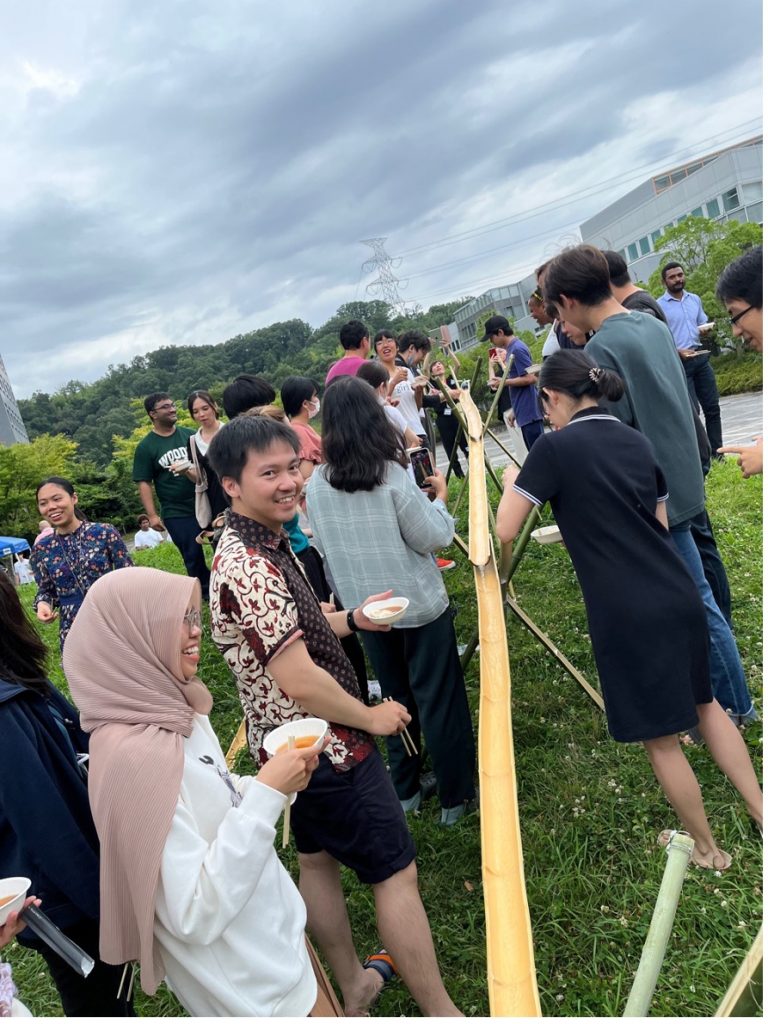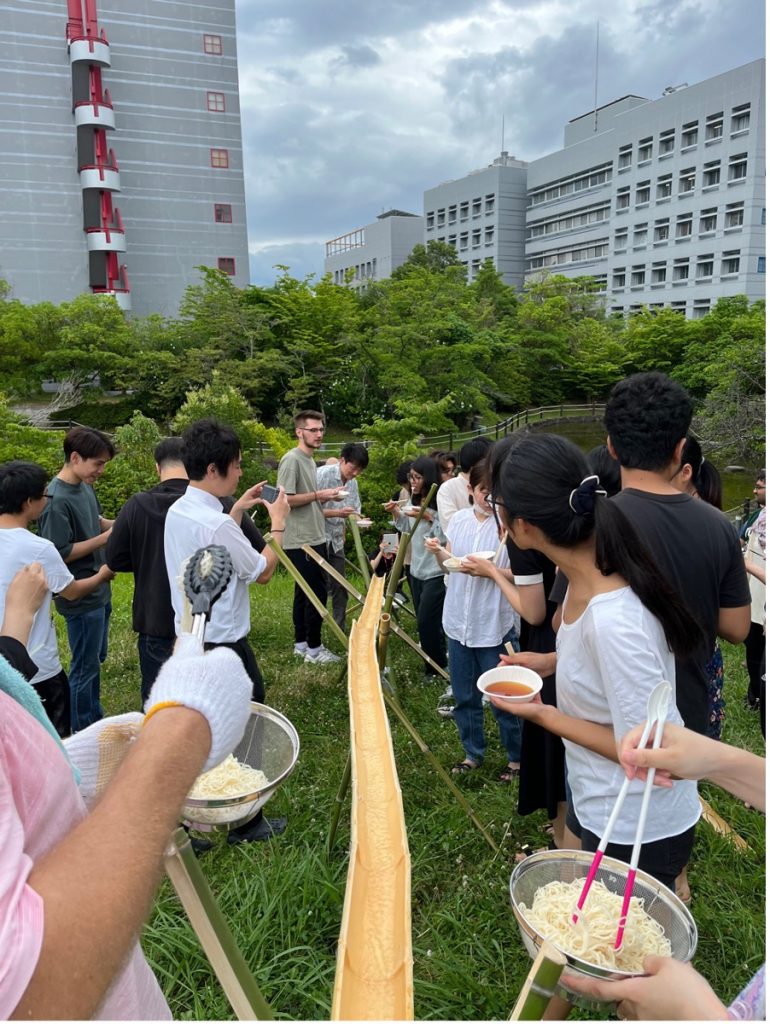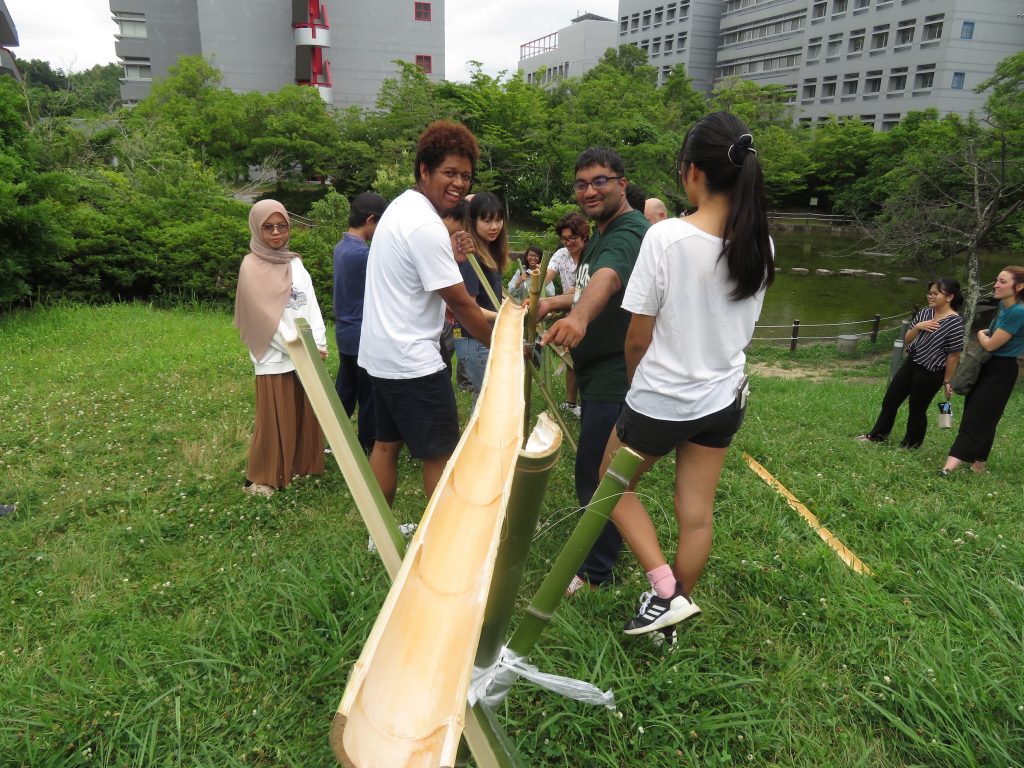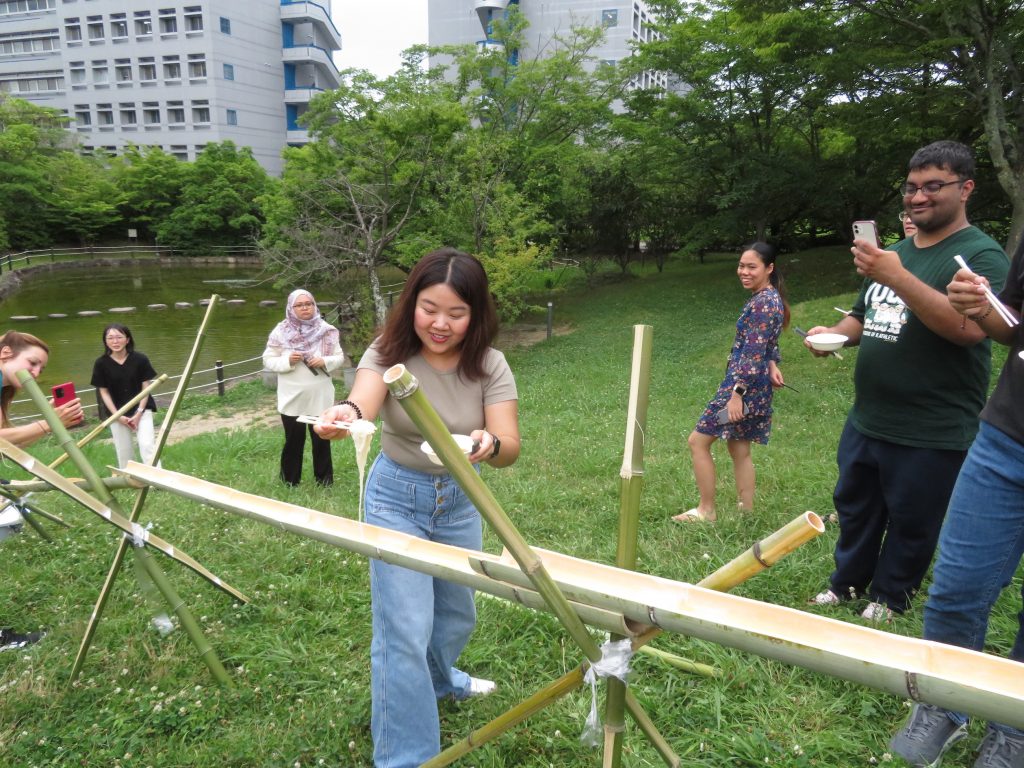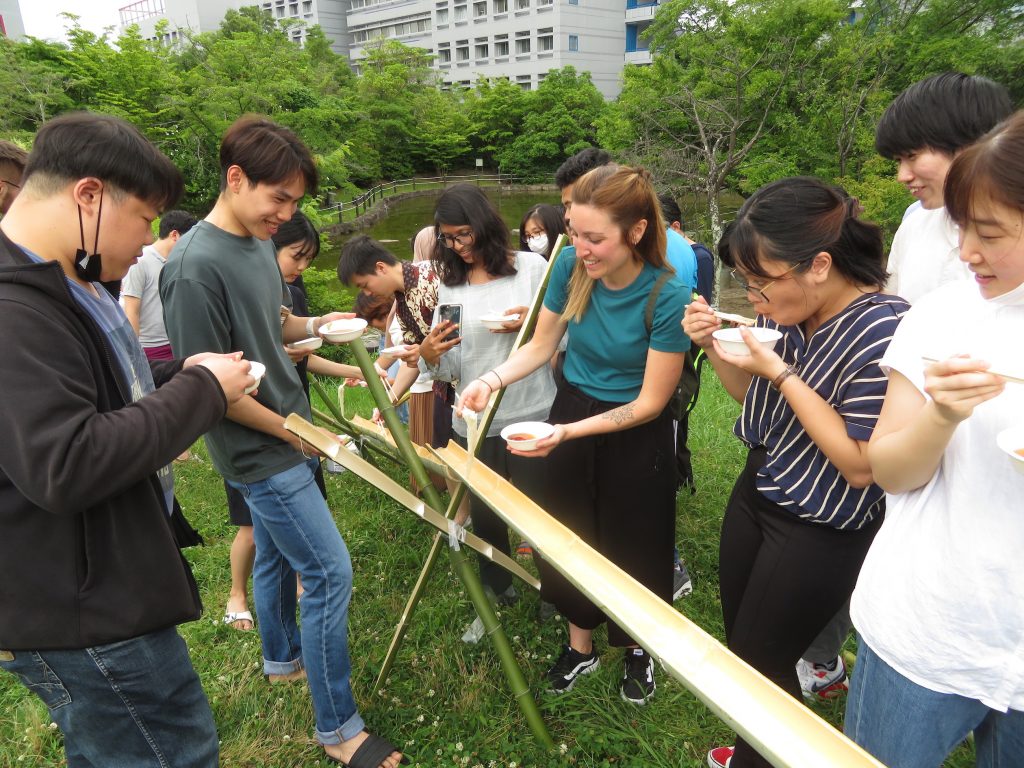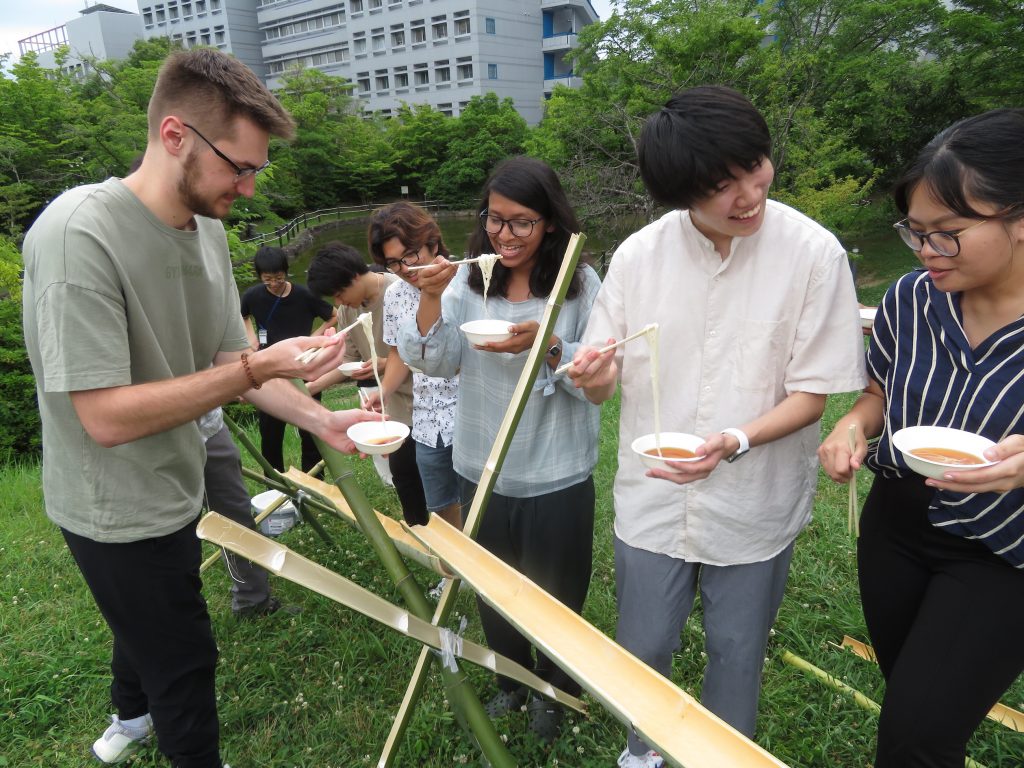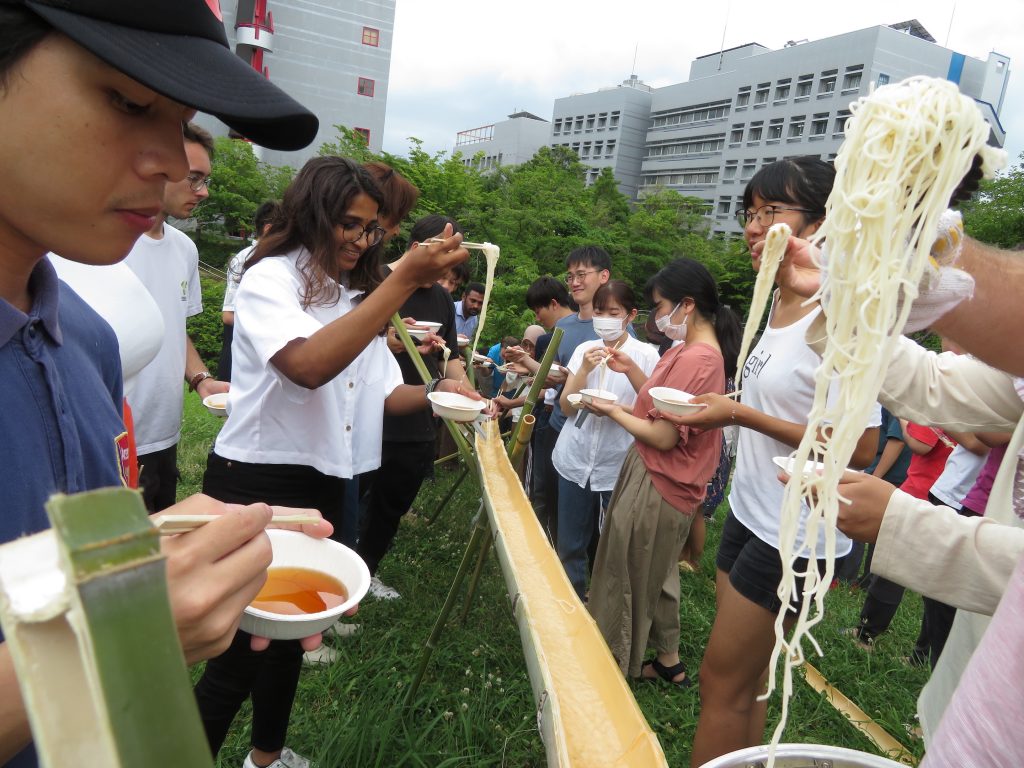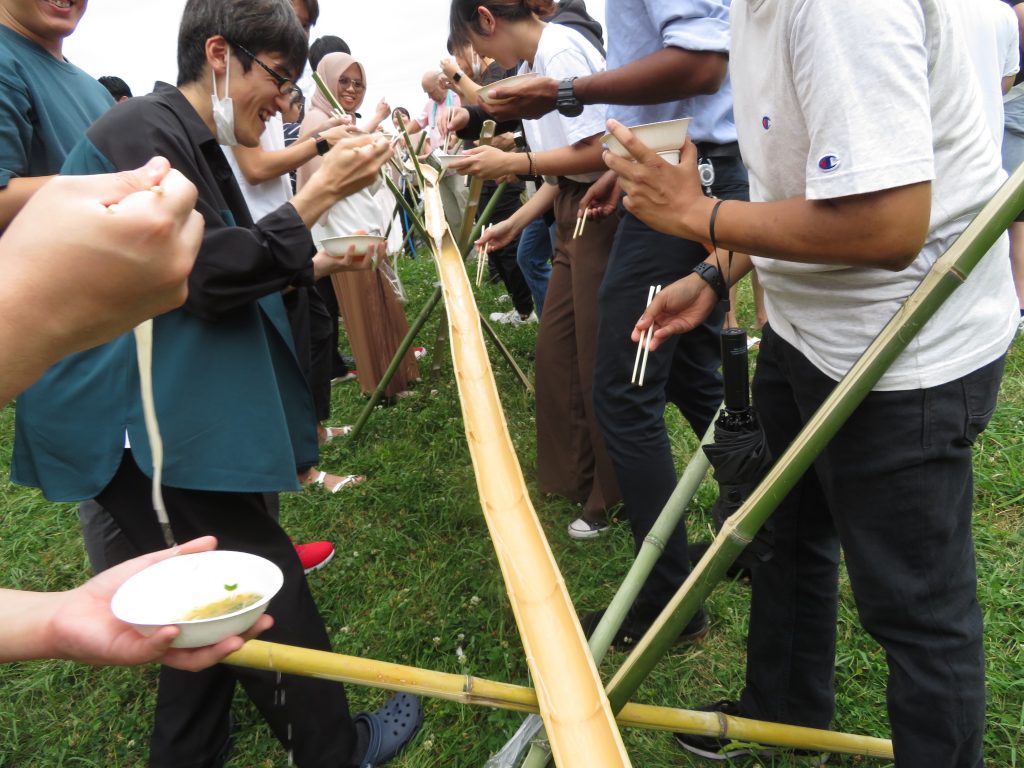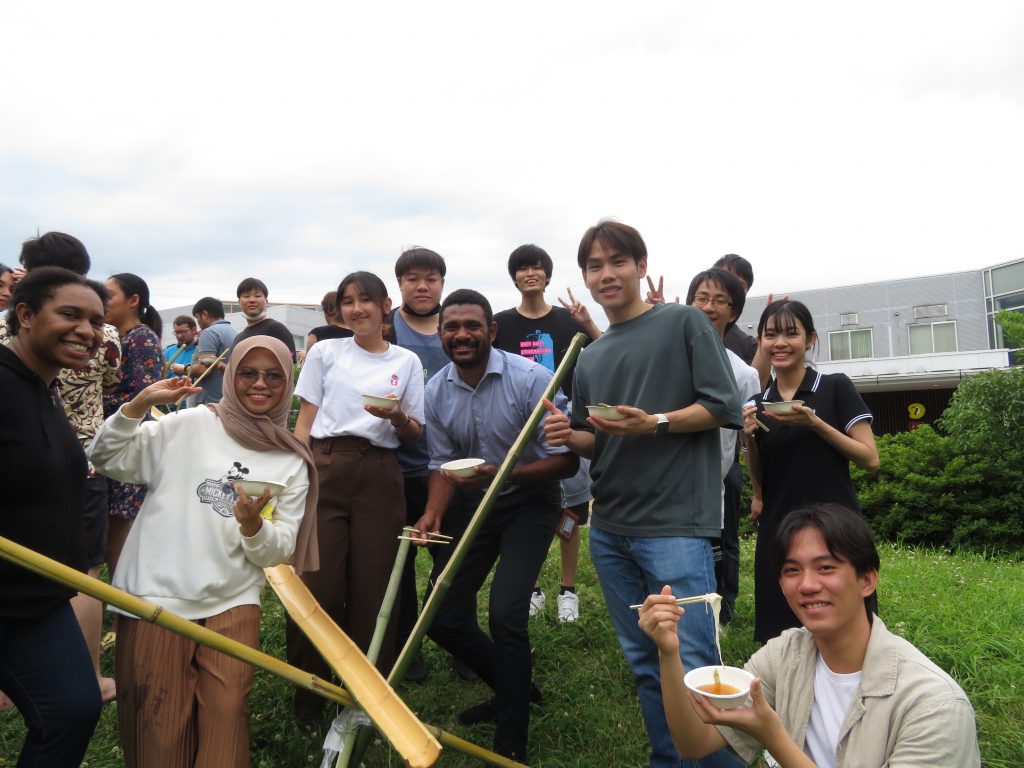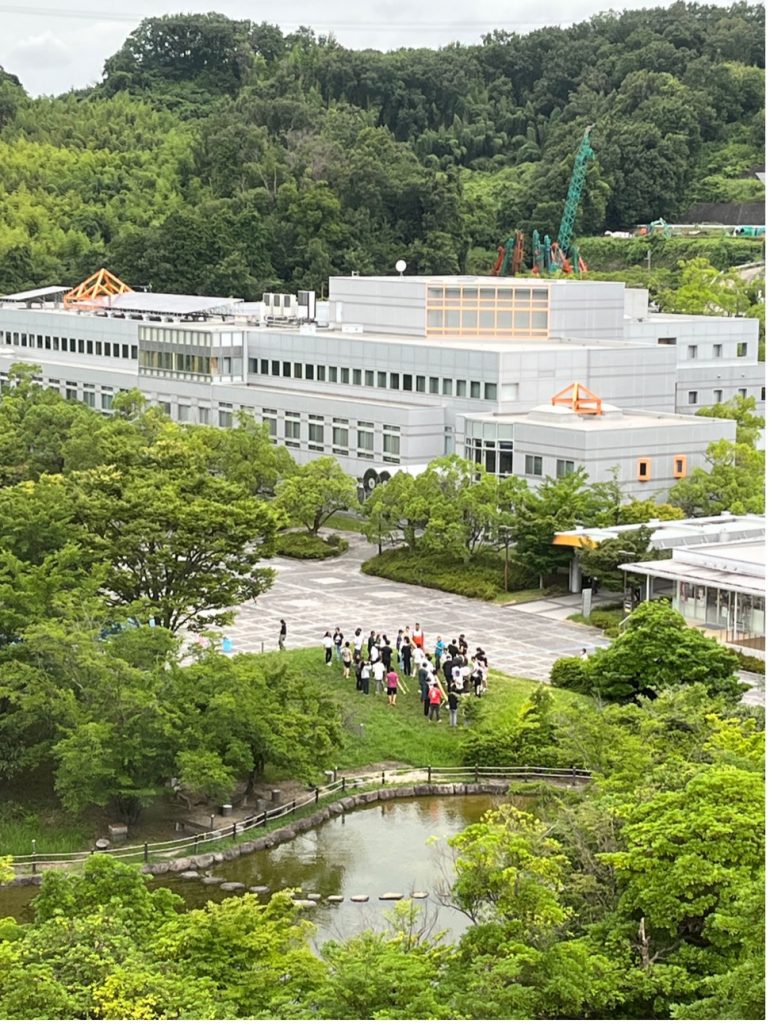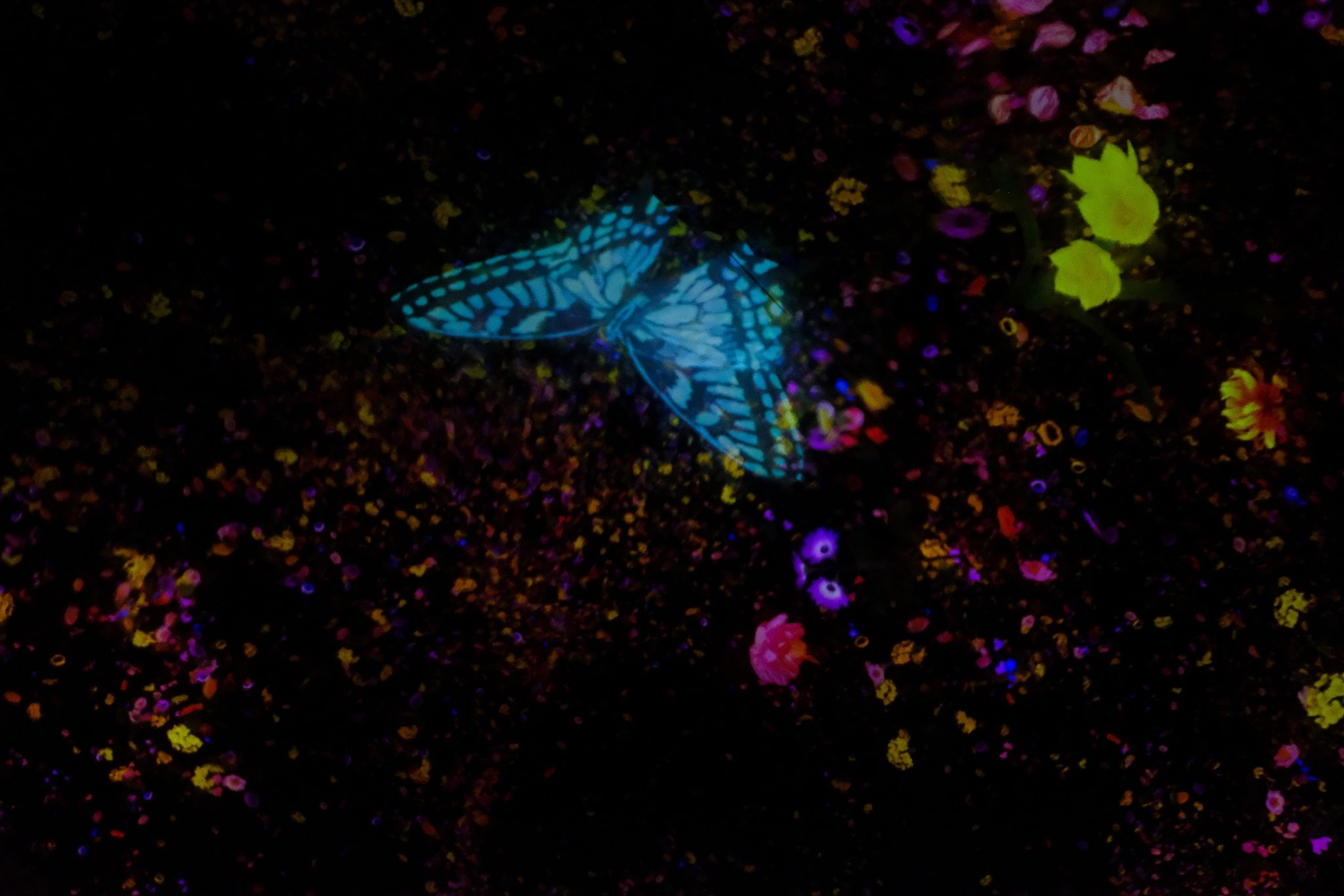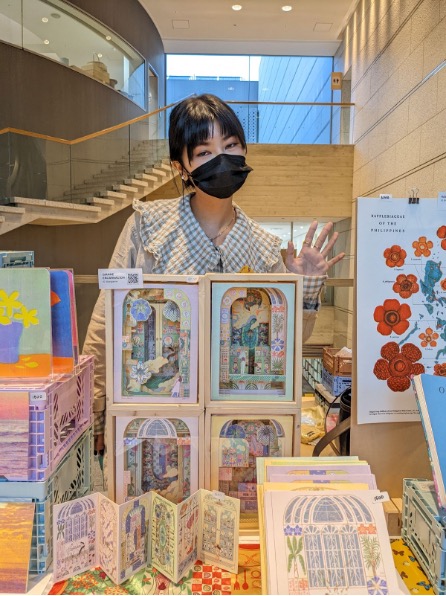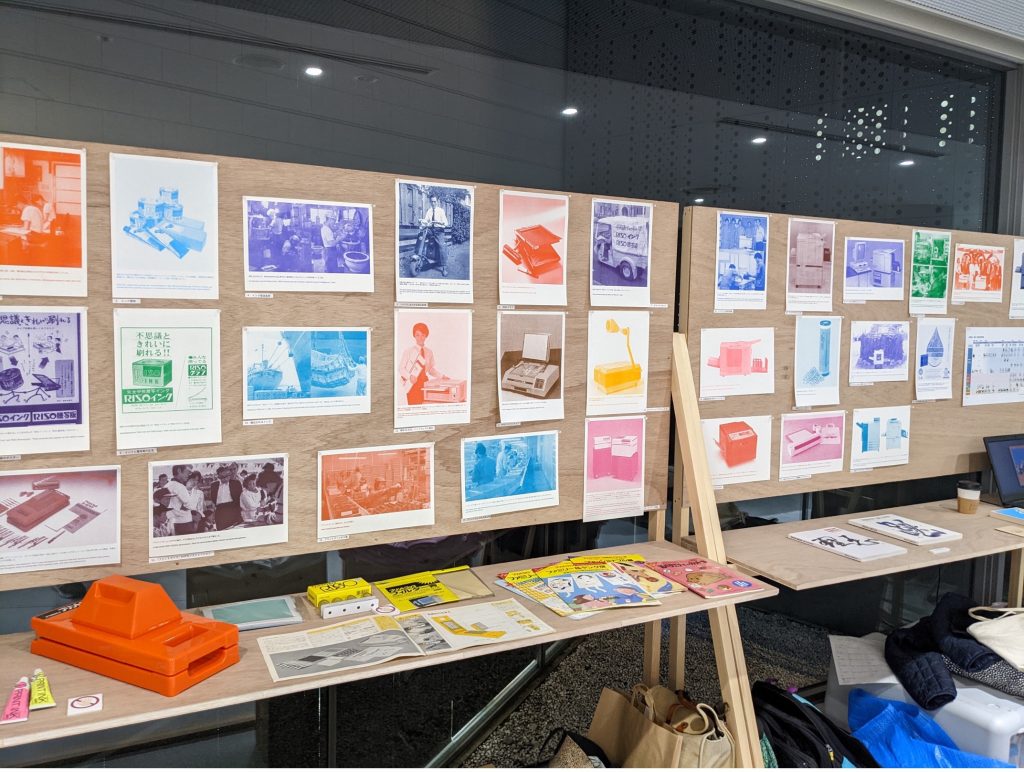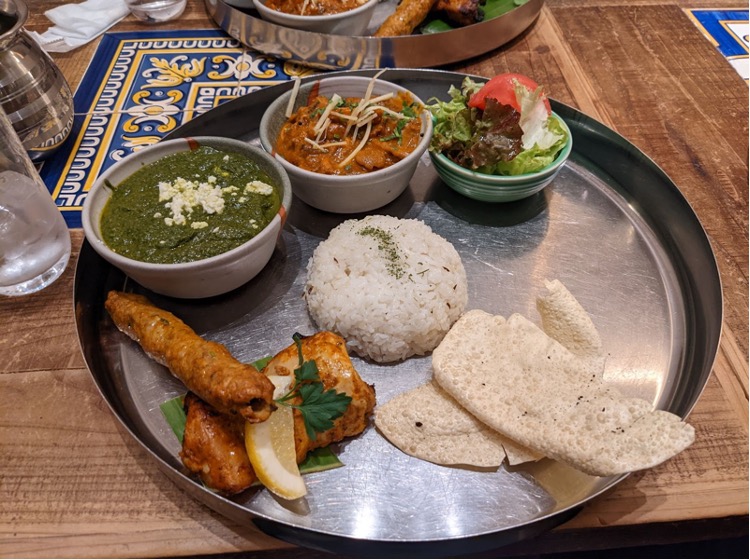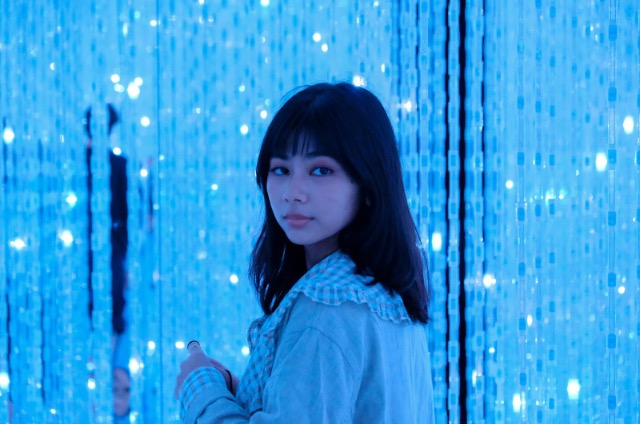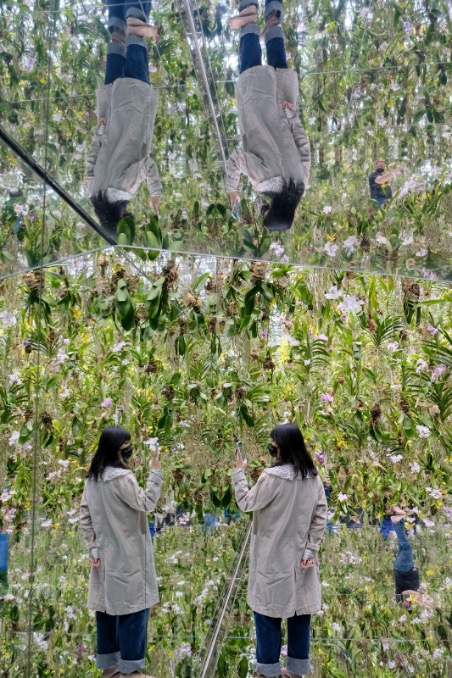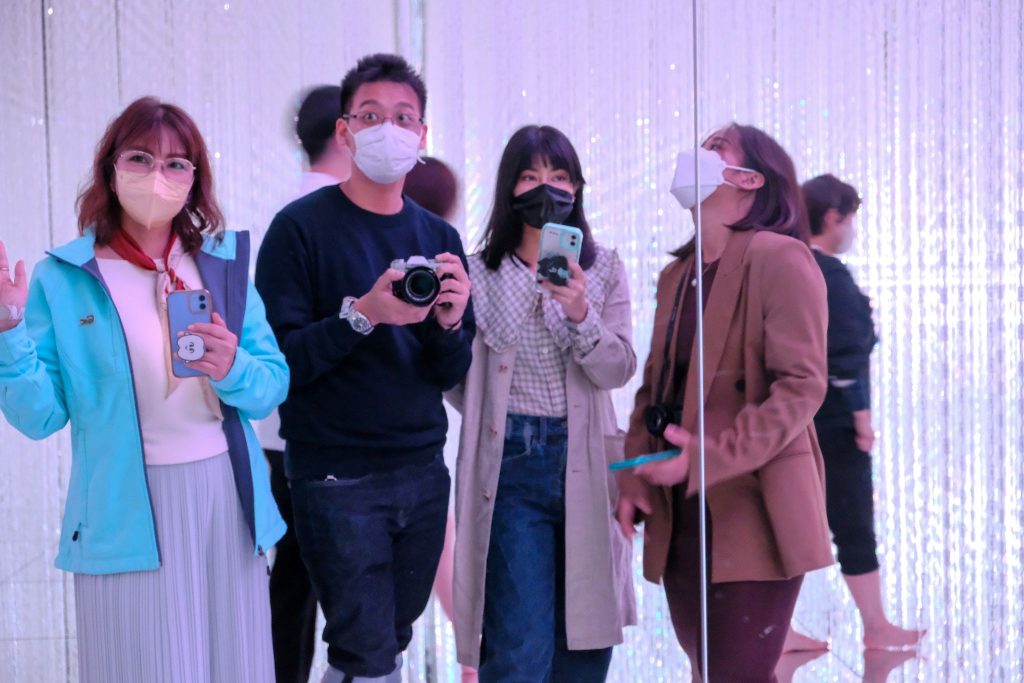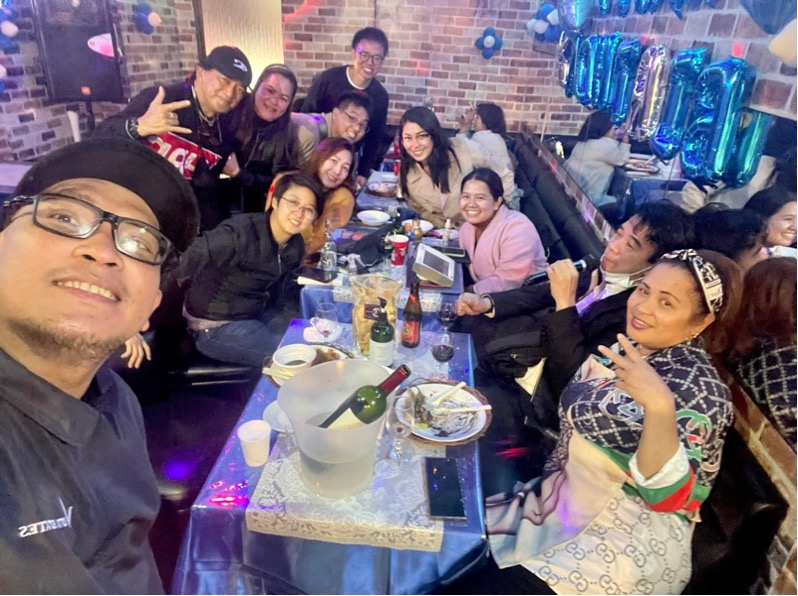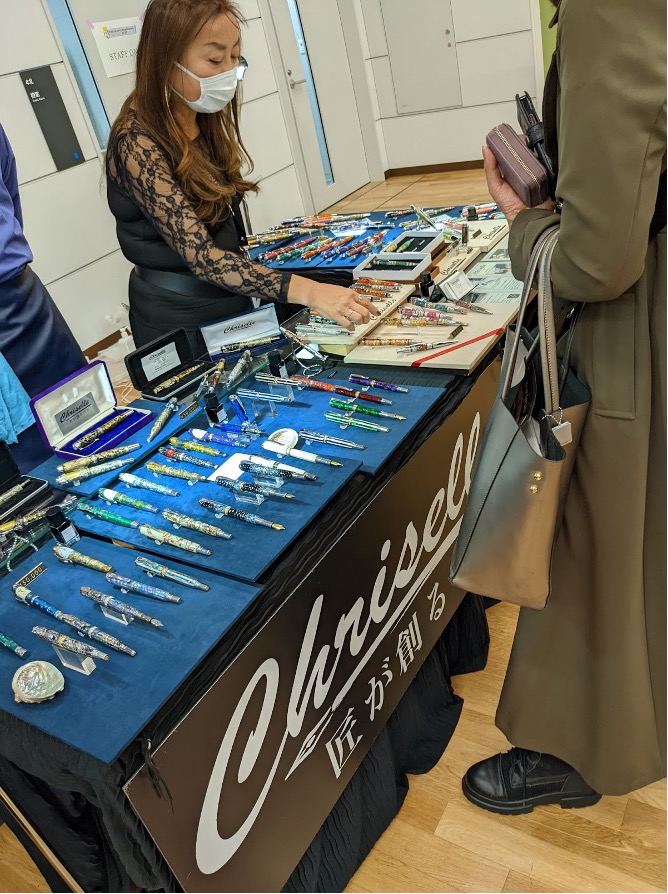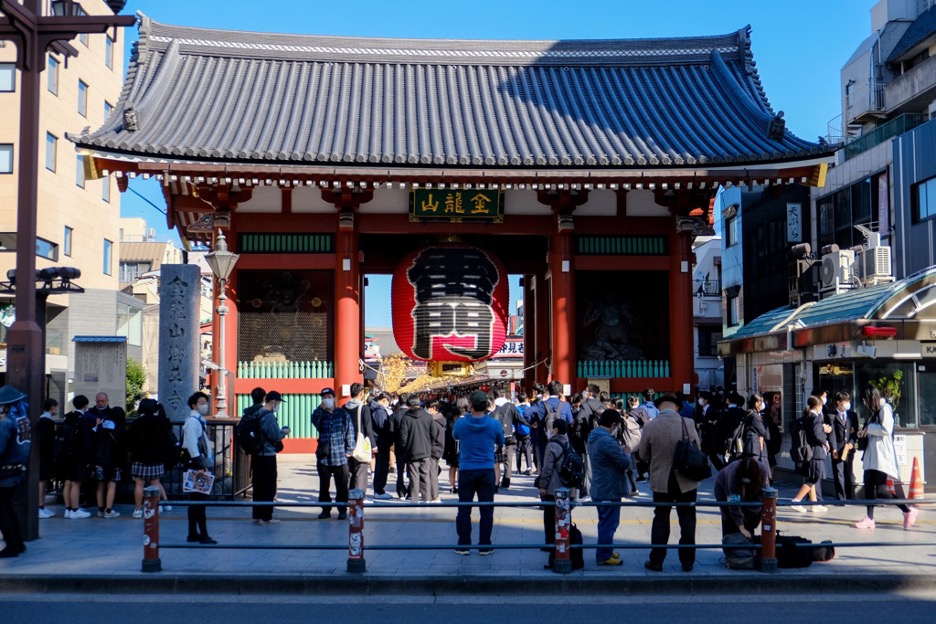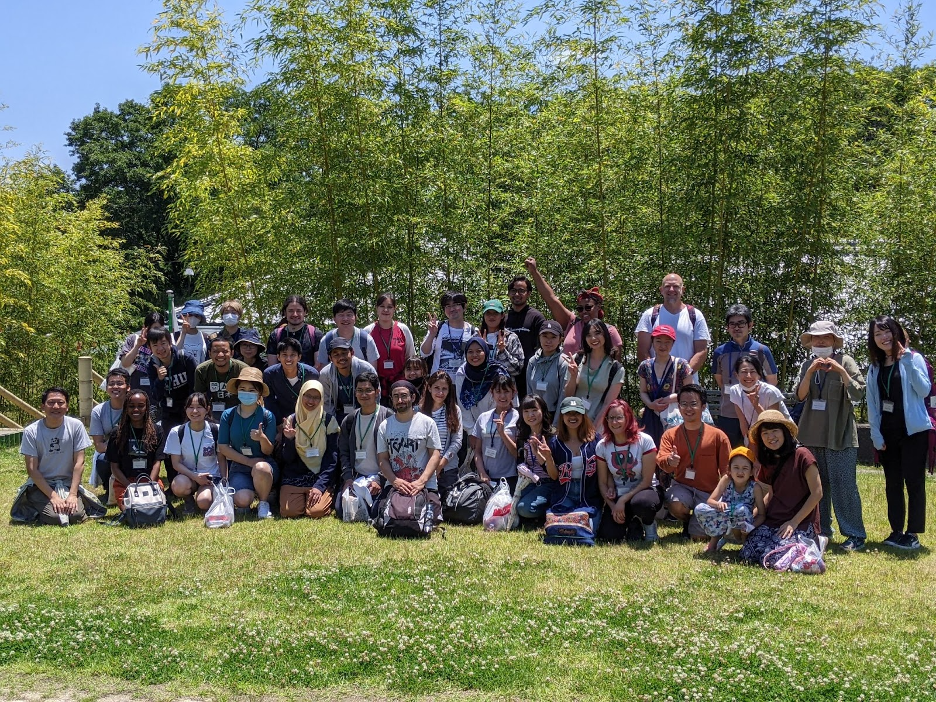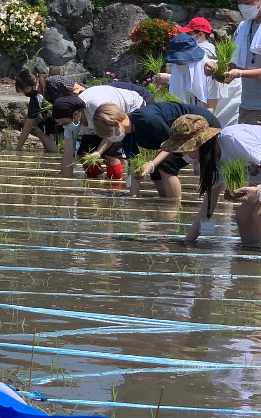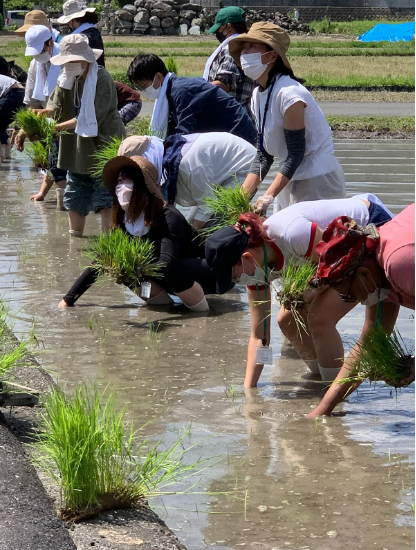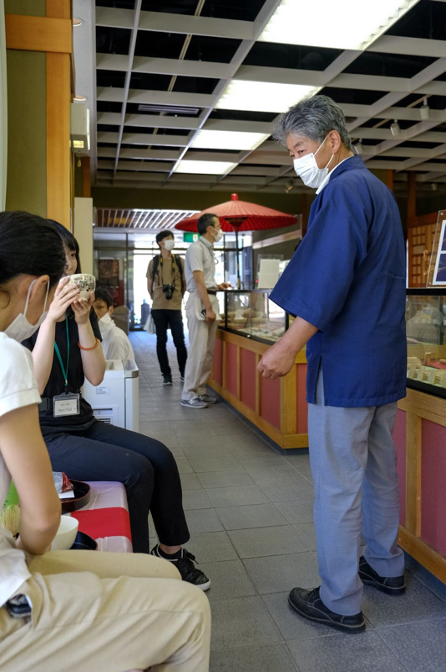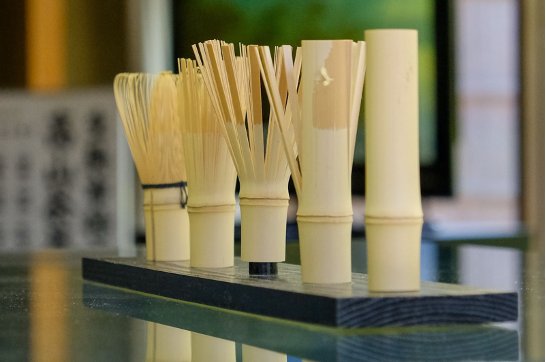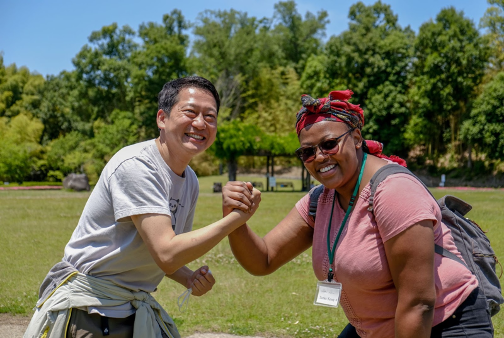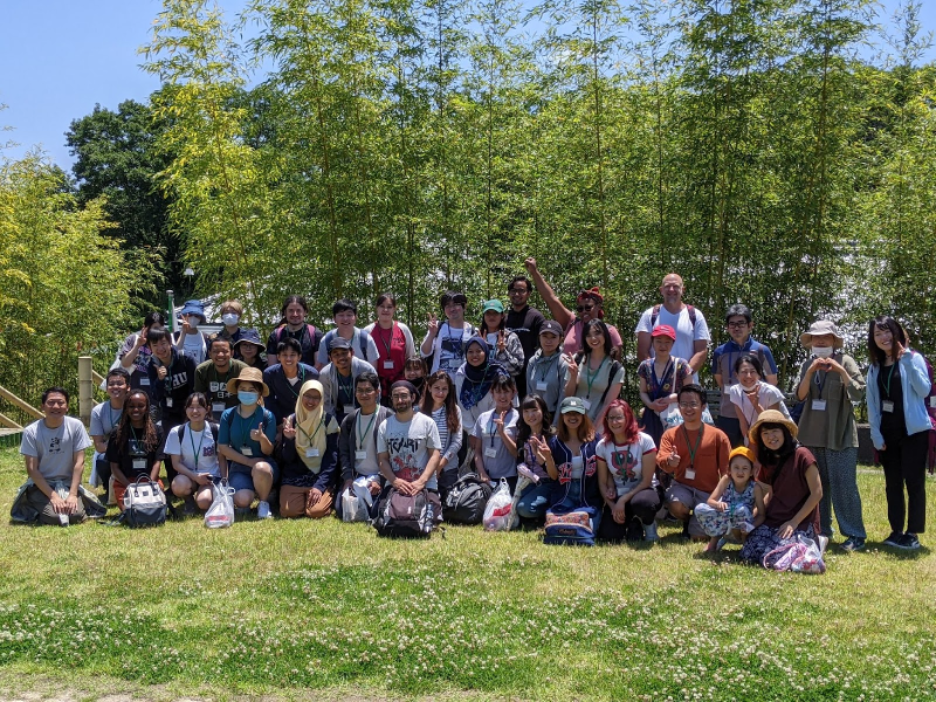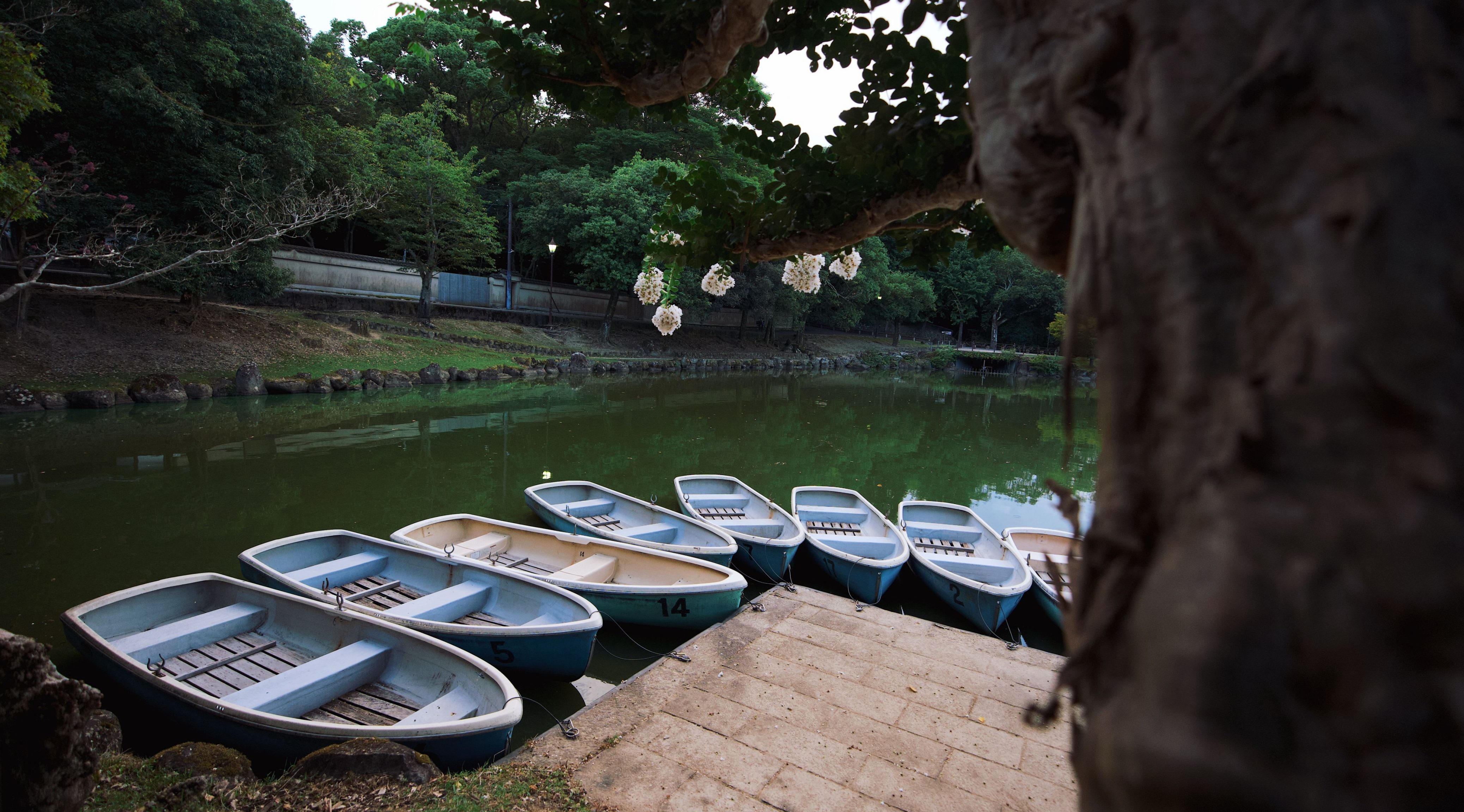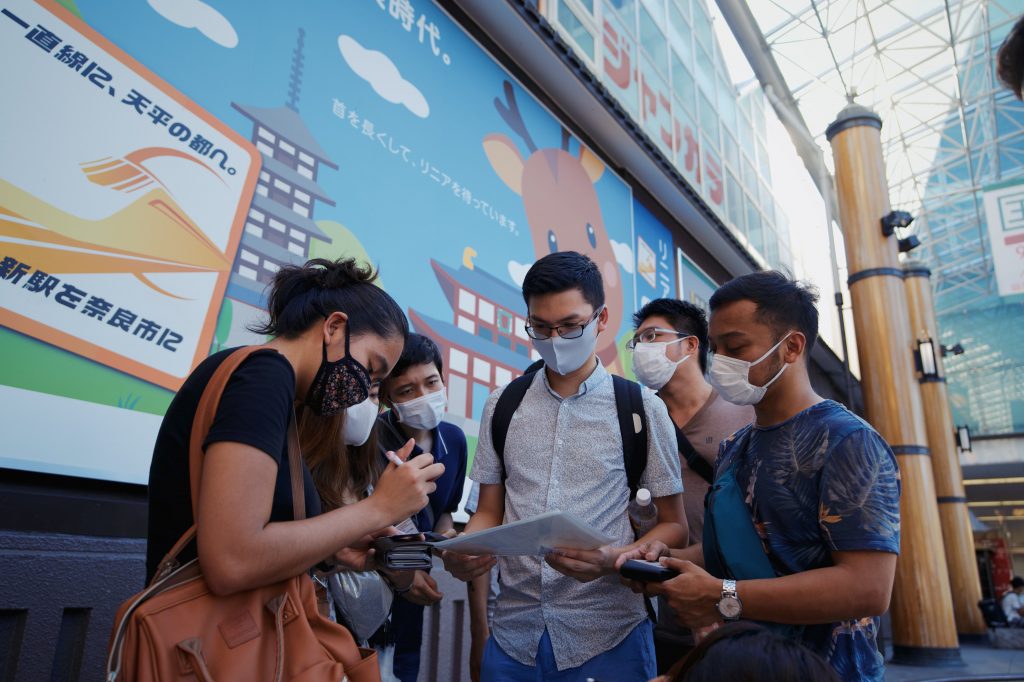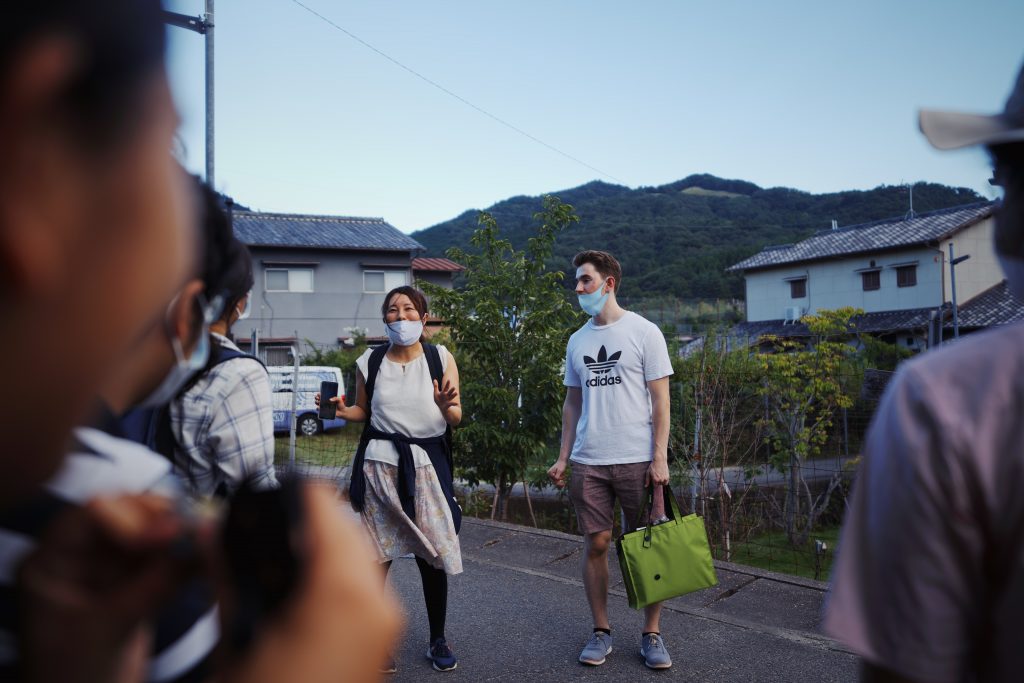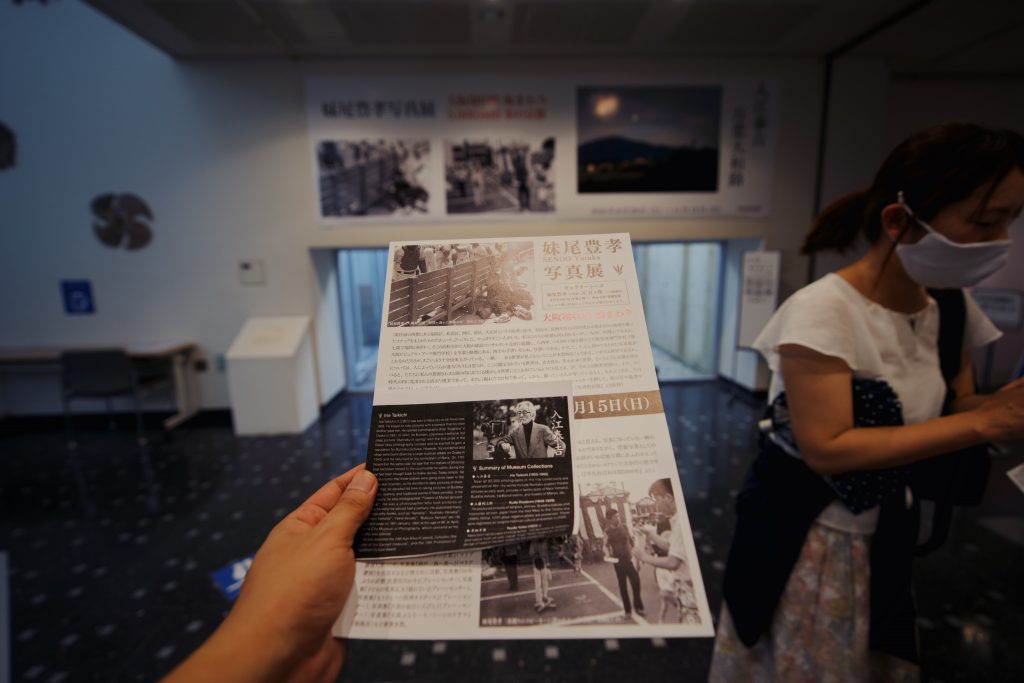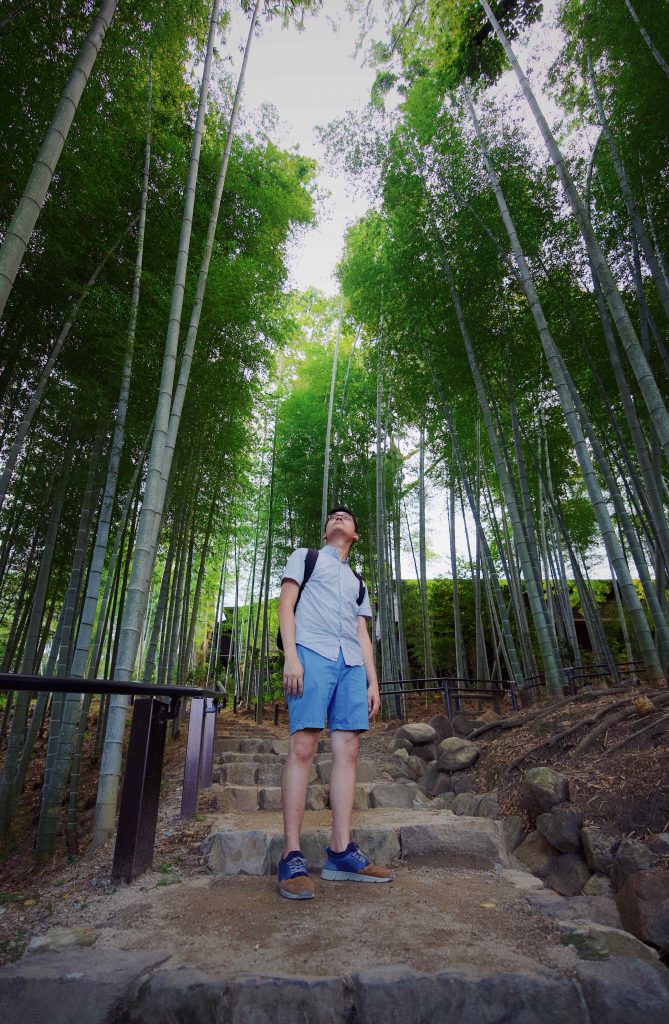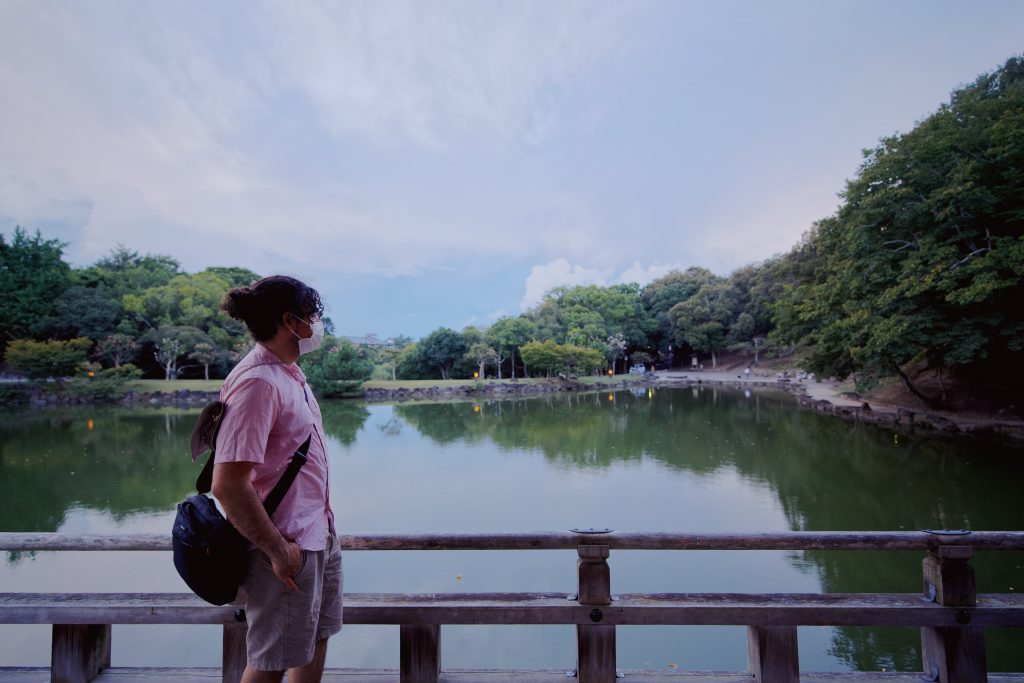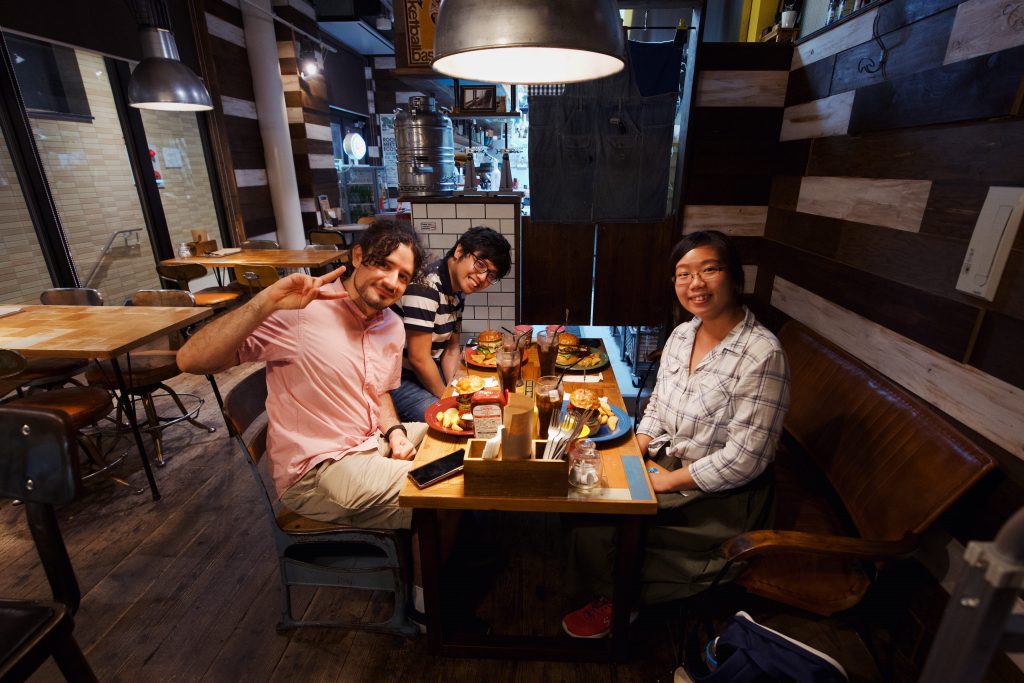The Chokyu-ji Temple hosts the monthly educational and entertaining program “Templish,” specifically designed for the young children of Ikoma. This unique program blends English learning with the exploration of rich Japanese culture. In February, the focus was on a project titled “Planting Potatoes,” where volunteer students from NAIST participated in setting up a vegetable garden for potato cultivation.
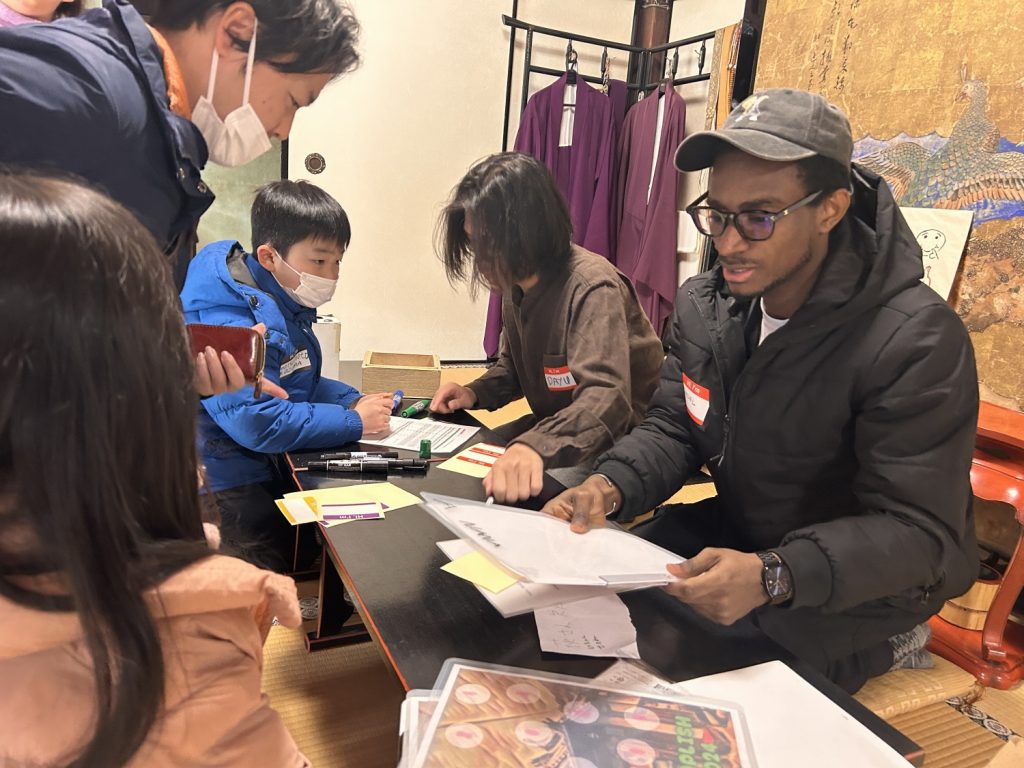
Upon their arrival, volunteers were warmly received by a dedicated member of the Templish team. This individual efficiently divided the volunteers into three distinct groups.
The first group took on the enthusiastic greeting of the children, the second handled the logging of their participation in monthly activity notebooks, and the third offered a variety of engaging games to entertain the young minds whilst waiting for the event to start.
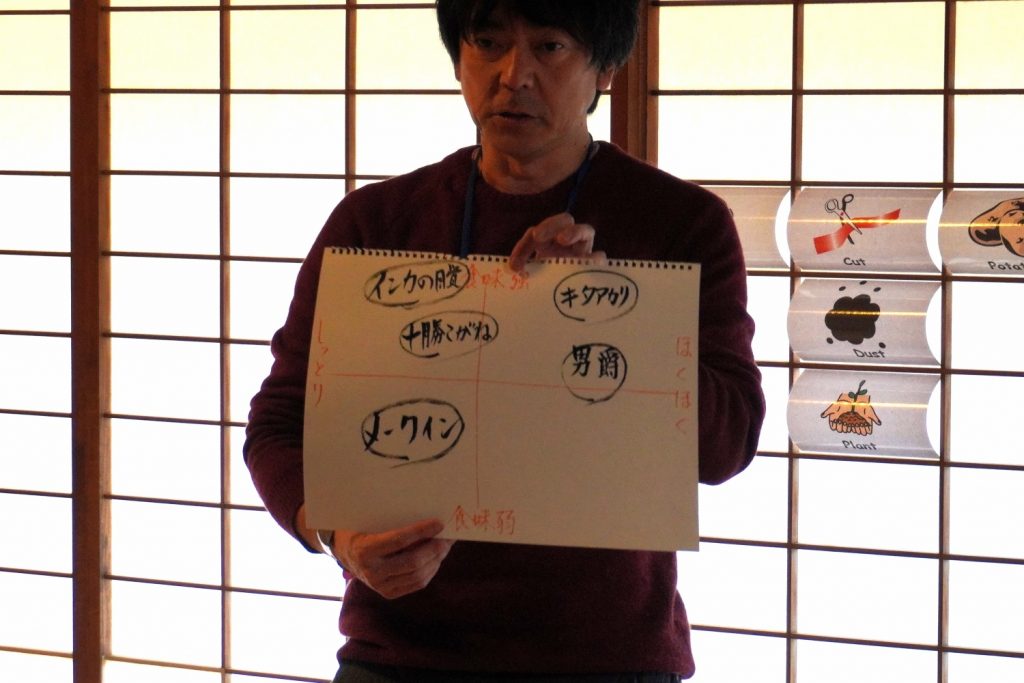
Following a general assembly, the organizing team took the time to outline the day’s schedule. Through simple gestures and accessible English, the facilitators skillfully guided the children through the potato planting process, supporting their explanations with visual aids to enhance understanding. The key steps included: “cut the potatoes”, “dust the potatoes”, and finally, “plant the potatoes”.
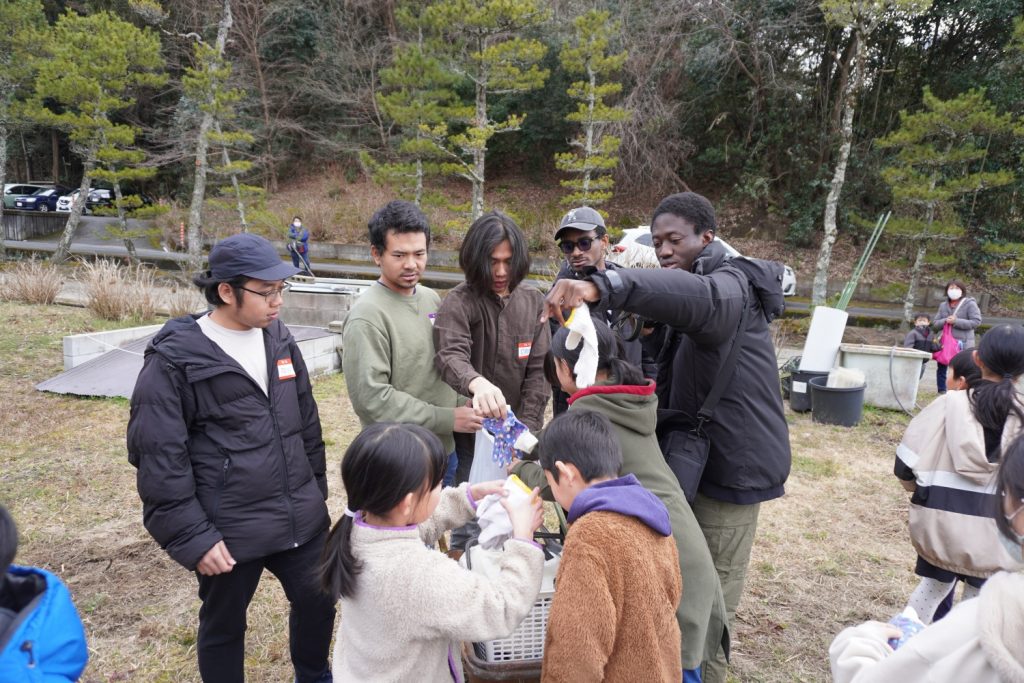
Once in the field, under the careful supervision of the volunteers, the budding young gardeners embarked on cutting and treating the potatoes. With these preparations completed, armed with trowels, they proceeded to gently dig the soil to plant the tubers, thus putting into practice the instructions they had previously learned.
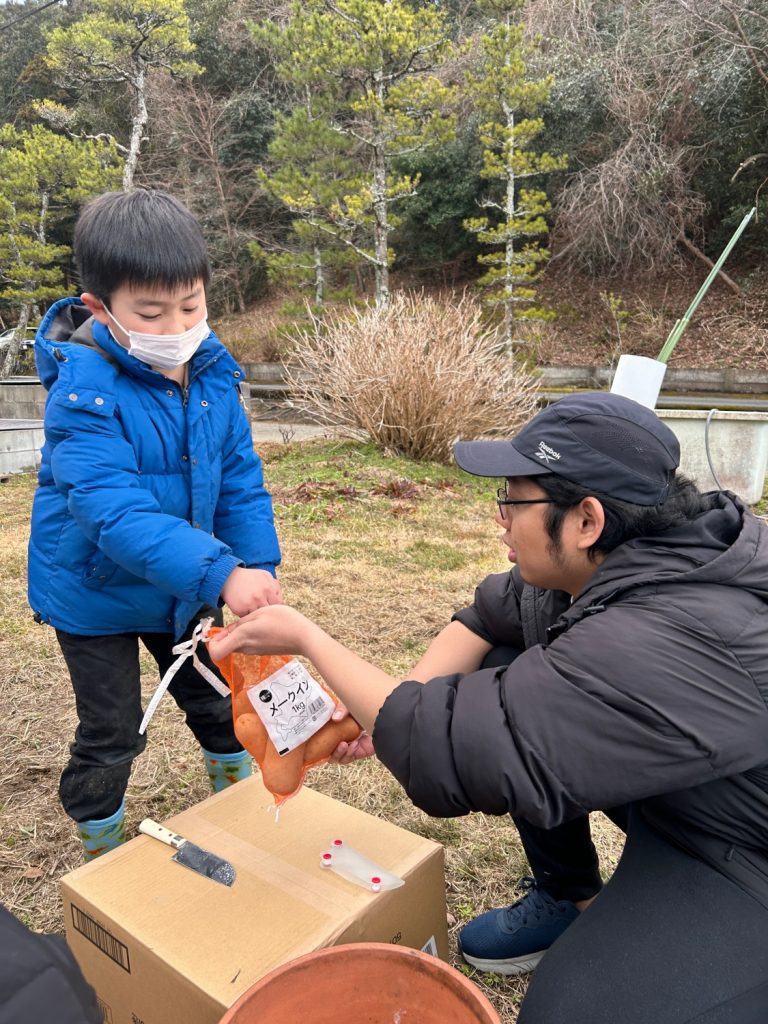
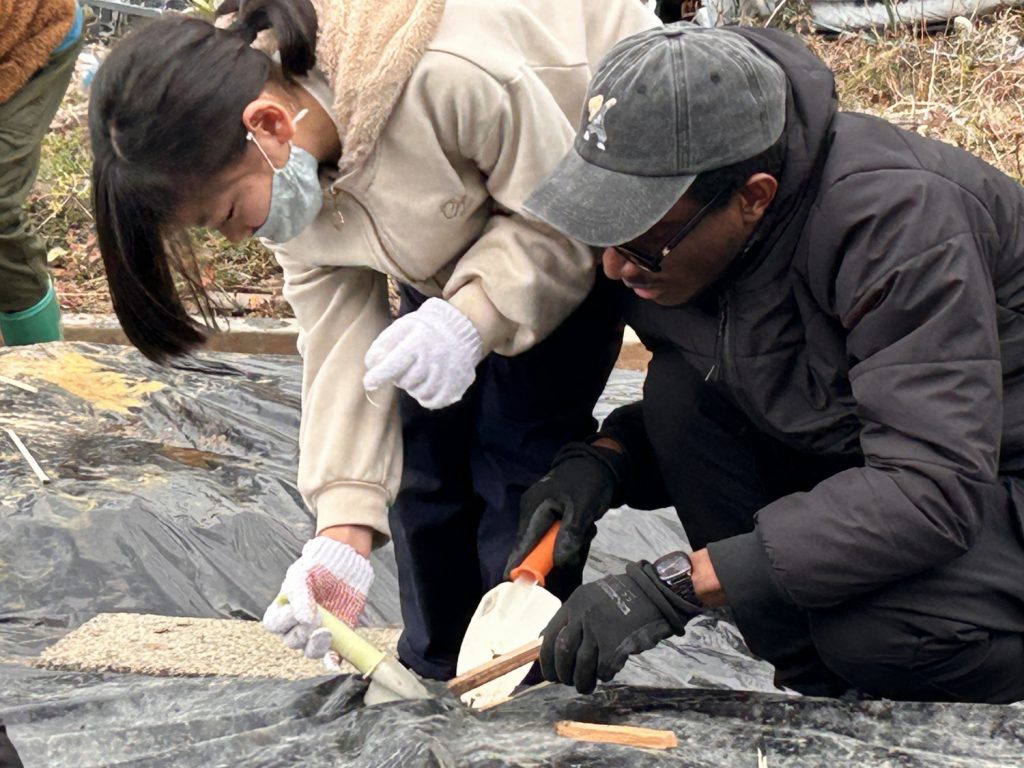
nce in the field, under the careful supervision of the volunteers, the budding young gardeners embarked on cutting and treating the potatoes. With these preparations completed, armed with trowels, they proceeded to gently dig the soil to plant the tubers, thus putting into practice the instructions they had previously learned.
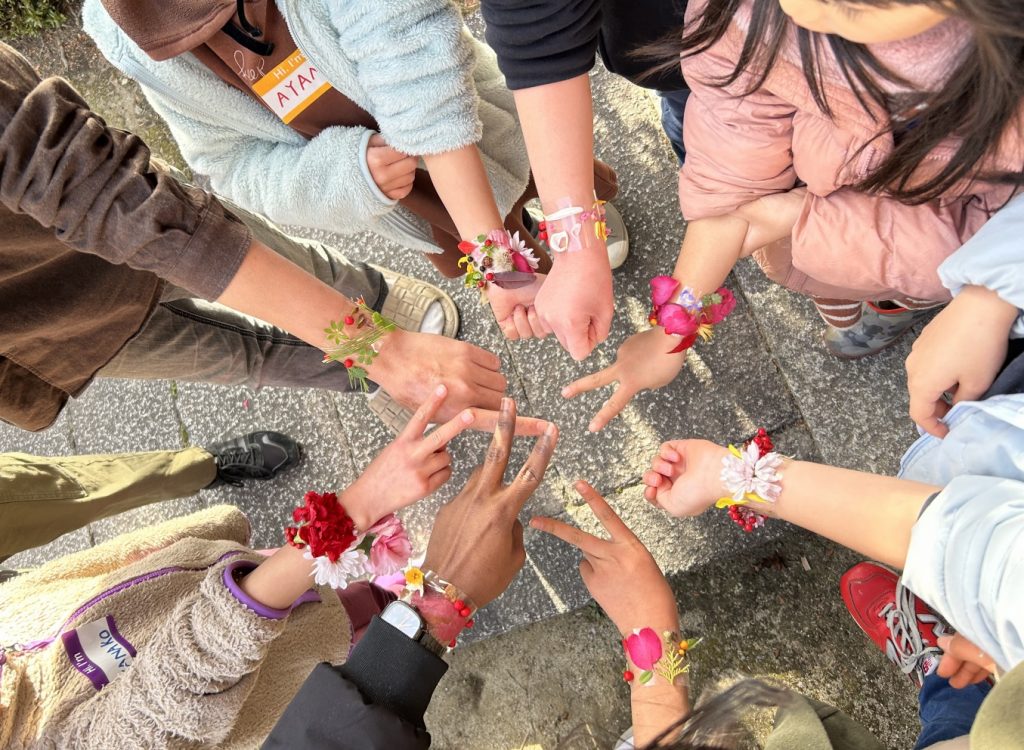
The playful moment continued with a sensory guessing game, where participants had to identify different fruits blindly, thus engaging their sense of touch.
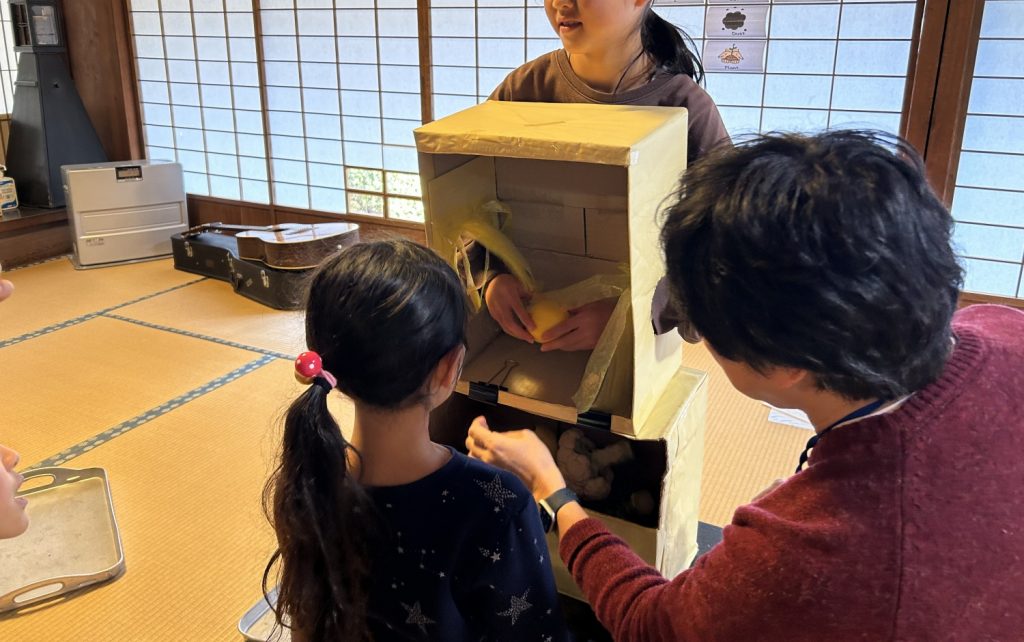
Concluding this memorable day, the announcement of the future potato harvest in June was made, highlighting the virtues of patience and perseverance. This project not only enabled the children to understand the life cycle of plants but also offered them an unforgettable experience of learning and sharing within the community.

